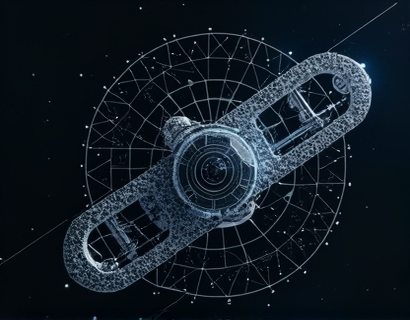Deciphering the Cosmic Equations: Unveiling the Secrets Where Science and Mathematics Converge
The universe, in its vast and intricate expanse, holds secrets that have captivated human imagination for centuries. At the heart of understanding these secrets lies the profound interplay between science and mathematics. This convergence is not merely a tool for exploration but a language through which the cosmos communicates its deepest mysteries. In this article, we delve into the intricate dance between these two disciplines, exploring how complex theories and real-world phenomena merge to reveal the profound secrets of the universe, sparking curiosity and deepening our understanding.
To begin, it is essential to recognize that mathematics is not just a human construct but a universal language. The patterns and structures that govern the natural world are inherently mathematical. From the spirals of galaxies to the fractal patterns of coastlines, mathematics underpins the fabric of reality. This is where theoretical physics comes into play, using mathematical frameworks to describe and predict the behavior of the universe at various scales, from the subatomic to the cosmic.
The relationship between science and mathematics is symbiotic. Science provides the empirical data and the questions, while mathematics offers the tools to answer them. This partnership has led to some of the most groundbreaking discoveries in history. For instance, Newton's laws of motion and universal gravitation, formulated in the 17th century, were mathematical expressions that explained the motions of planets and apples alike. These laws not only unified terrestrial and celestial mechanics but also laid the foundation for classical mechanics.
Moving forward, the 20th century saw the emergence of theories that further blurred the lines between science and mathematics. Einstein's theory of general relativity redefined our understanding of gravity, space, and time. The mathematical framework of differential geometry was crucial in formulating this theory, showing how curvature in spacetime affects the motion of objects. The famous equation \( G_{\mu\nu} = \frac{8\pi G}{c^4} T_{\mu\nu} \) encapsulates the relationship between the geometry of spacetime and the distribution of mass and energy.
Another pivotal area where mathematics and science converge is in the realm of quantum mechanics. Here, the probabilistic nature of particles and the wave-particle duality challenge our classical intuitions. The Schrödinger equation, a central equation in quantum mechanics, is a partial differential equation that describes how the quantum state of a physical system changes over time. The equation \( i\hbar \frac{\partial}{\partial t} \Psi(\mathbf{r}, t) = \hat{H} \Psi(\mathbf{r}, t) \) is a mathematical expression that encapsulates the evolution of quantum states, where \( \Psi \) is the wave function and \( \hat{H} \) is the Hamiltonian operator.
In the realm of cosmology, the Big Bang theory and the subsequent evolution of the universe are described using a combination of general relativity and quantum field theory. The Friedmann equations, derived from Einstein's field equations, govern the expansion of the universe. These equations, \( \left(\frac{\dot{a}}{a}\right)^2 = \frac{8\pi G}{3}\rho - \frac{k}{a^2} + \frac{\Lambda}{3} \) and \( \frac{\dot{a}^2}{a} + \frac{k}{a^2} = -\frac{4\pi G}{3} \rho + \frac{\Lambda}{3} \), where \( a \) is the scale factor, \( \rho \) is the energy density, \( k \) is the curvature constant, and \( \Lambda \) is the cosmological constant, provide a mathematical description of the universe's expansion and its fate.
The intersection of mathematics and physics is not limited to theoretical constructs. In practical applications, mathematical models are essential for understanding and predicting phenomena in various fields. For example, in astrophysics, the Roche limit, which determines the distance within which a celestial body, held together only by its own gravity, will disintegrate due to a second celestial body's tidal forces, is calculated using gravitational and rotational dynamics. The formula \( d = \frac{2rm}{3\sqrt{GMm}} \), where \( d \) is the Roche radius, \( r \) and \( m \) are the radii and masses of the smaller body, \( M \) and \( G \) are the mass and the gravitational constant of the larger body, is a direct application of mathematical principles to a real-world scenario.
In particle physics, the Standard Model relies heavily on mathematical structures such as groups and symmetries to describe the fundamental particles and their interactions. The mathematical framework of gauge theories, particularly quantum chromodynamics (QCD) and the electroweak theory, uses Lie groups and their representations to describe the strong and weak nuclear forces. The equations governing these interactions, such as the Yang-Mills equations, are deeply mathematical and have been crucial in predicting the existence of particles like the Higgs boson.
The beauty of this convergence is evident in the way mathematical elegance often precedes scientific discovery. The Pythagorean theorem, Euclid's geometry, and the calculus developed by Newton and Leibniz were not just abstract concepts but tools that would later be essential in understanding the physical world. Similarly, modern mathematical advancements continue to drive scientific progress. For instance, the development of topology and differential geometry has been instrumental in our understanding of black holes and the structure of spacetime.
The role of mathematics in physics extends beyond description and prediction. It also provides a framework for unifying seemingly disparate phenomena. The quest for a theory of everything, which aims to unify general relativity and quantum mechanics, is a prime example. String theory and loop quantum gravity are two leading approaches that use advanced mathematical concepts to bridge the gap between the macroscopic and microscopic worlds. These theories, while still under development, demonstrate the profound impact of mathematical thinking on our understanding of the universe.
Moreover, the computational power of modern computers has opened new avenues for exploring the intersection of science and mathematics. Numerical simulations and computational models allow scientists to test theories and make predictions that would be impossible to verify through analytical methods alone. For example, simulations of cosmic simulations, such as the Illustris project, use supercomputers to model the formation and evolution of galaxies, providing insights into the interplay between dark matter, gas dynamics, and gravitational interactions.
The educational value of exploring this convergence cannot be overstated. For science and math enthusiasts, delving into these topics offers a deeper appreciation of the underlying principles that govern the universe. It fosters a sense of wonder and curiosity, encouraging further exploration and innovation. For students and educators, understanding the interplay between science and mathematics enhances problem-solving skills and critical thinking, preparing the next generation of scientists and thinkers.
In conclusion, the intricate dance between science and mathematics is a testament to the human quest for knowledge. The mathematical language that describes the universe's secrets is a powerful tool that continues to unlock new frontiers. As we stand on the shoulders of giants like Newton, Einstein, and Schrödinger, we are reminded that the journey of discovery is far from over. The future holds even more profound revelations, waiting to be deciphered through the elegant equations and theoretical frameworks that bridge the realms of science and mathematics.










































